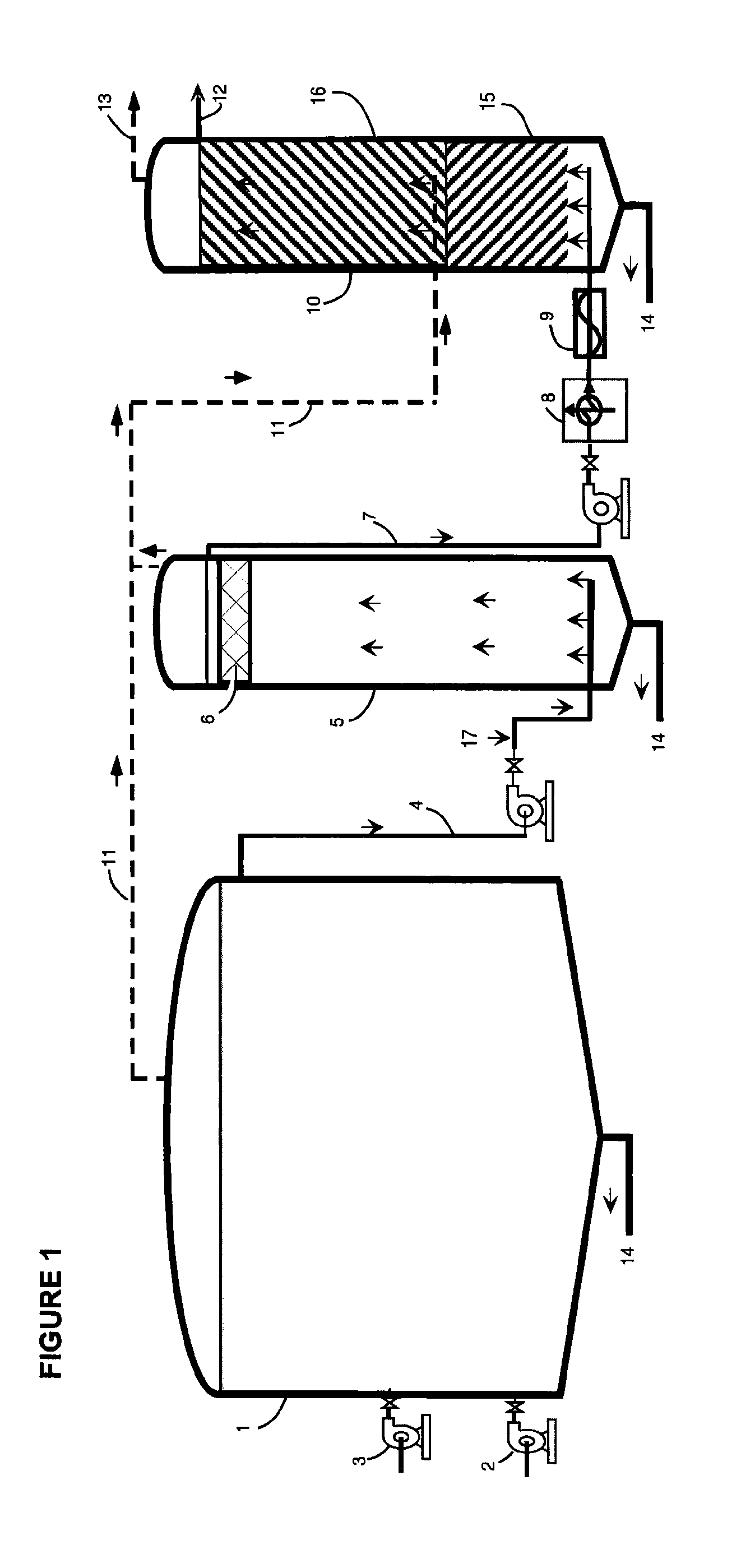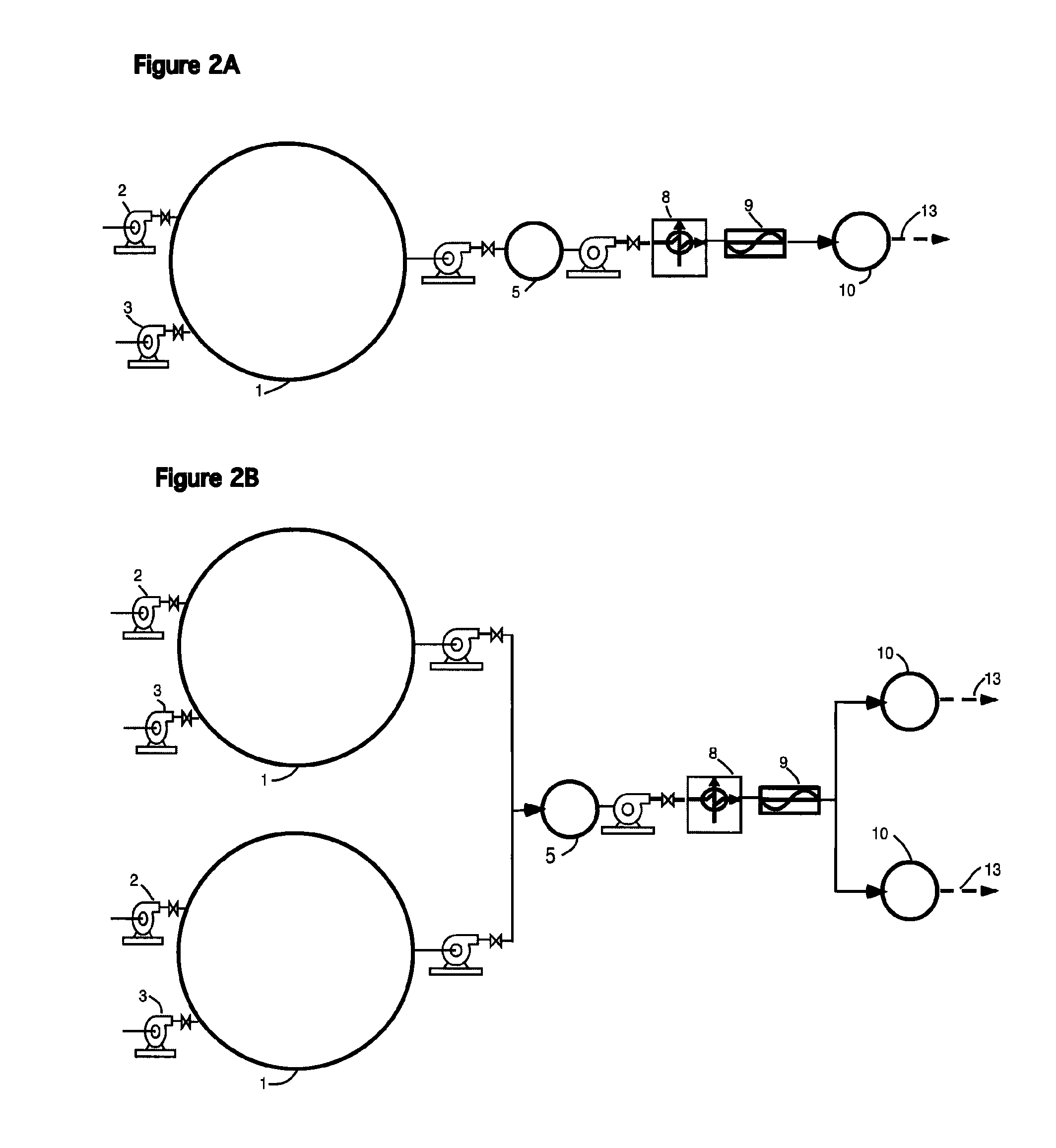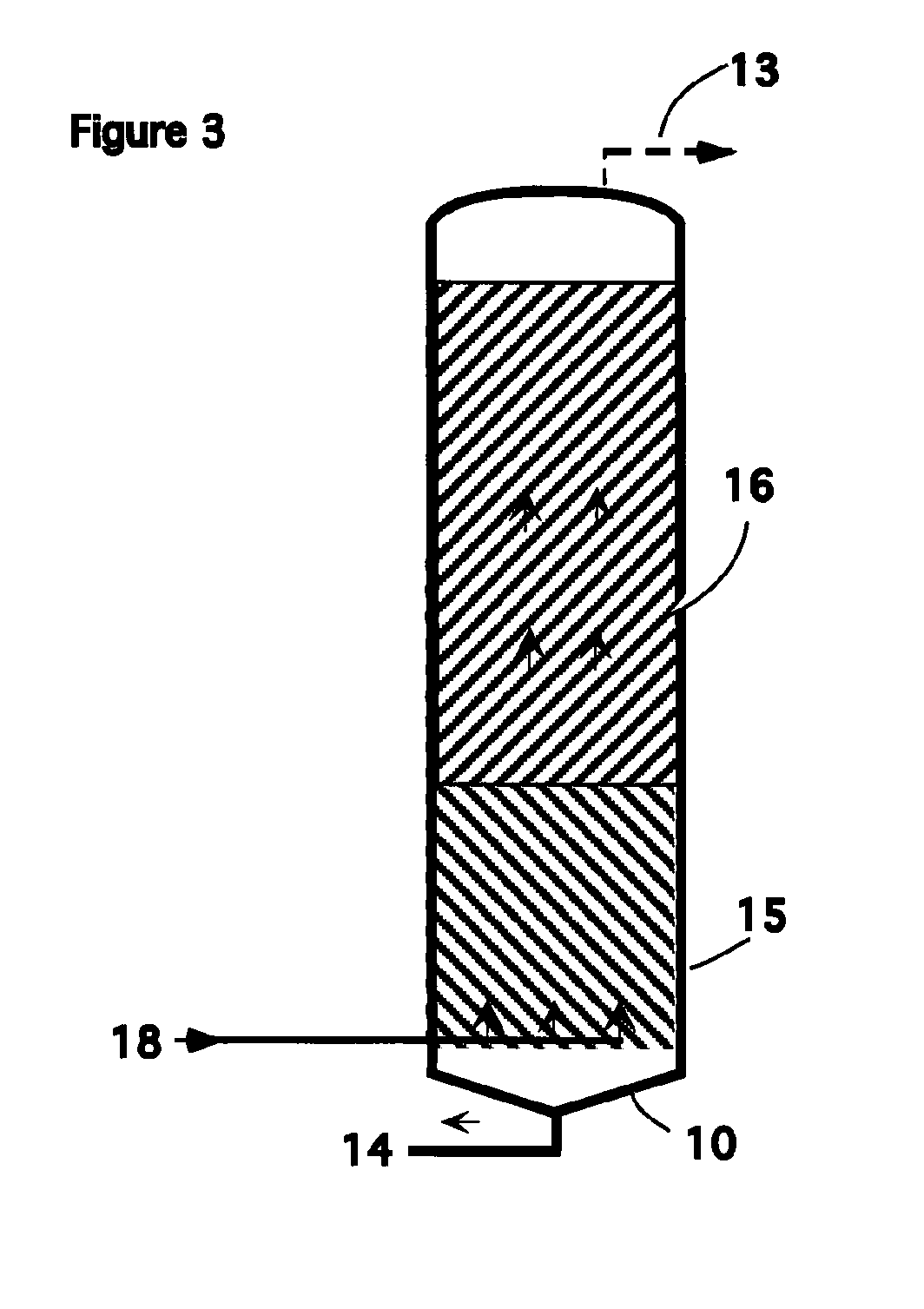Three Stage, Multiple Phase Anaerobic Digestion System and Method
an anaerobic digestion and multiple phase technology, applied in the field of three stage, multiple phase anaerobic digestion system and method, can solve the problems of slow reproducibility of methanogens, rate-limiting steps, anaerobic process, etc., to increase the organic degradation and methane gas production rate, improve the reliability, and simplify the operation requirements
- Summary
- Abstract
- Description
- Claims
- Application Information
AI Technical Summary
Benefits of technology
Problems solved by technology
Method used
Image
Examples
second embodiment
[0041]FIG. 2A shows a FIG. 2A showing a single Stage I, a single Stage II, and a single Stage III, all in a series configuration. This type of implementation may be best for smaller systems.
third embodiment
[0042]FIG. 2B shows a FIG. 2B showing dual Stage I and Stage III, with a single Stage II. This embodiment is used with alternating mixing and feed from dual Stages I to single Stage II, and alternating feed from single Stage II to the dual Stage III's for larger systems.
[0043]Stage I takes place in the primary (first) digestion tank 1. It is preferably similar in size and configuration to that used in conventional single stage anaerobic digestion systems. Stage I is operated as a complete mix reactor wherein a feed pump 2 injects raw feedstock into the Stage I digestion tank 1. The primary digestion tank 1 is provided with at least one mixing means 3 (e.g., mechanical mixer, internal hydraulic jet nozzles, external chopper pumps) for mixing the contents of the primary digestion tank 1 and for causing rapid size reduction of the raw organic solids contained in the feedstock. This mixing and size reduction preferably uses the Liquid Dynamics Jetmix® systems.
[0044]Stage I is optimized...
example implementation
[0073] Injecting raw feedstock into a primary digestion tank; mixing the contents of the primary digestion tank mechanically, thereby reducing the size of the raw organic solids contained in the feedstock; holding feedstock in the digestion tank for a predetermined period of time to provide for extensive but incomplete microbial hydrolysis; ceasing mixing to allow for settling of denser solids; drawing off a supernatant from the upper portion of the contents of the primary digestion tank; pumping said supernatant to a second digestion tank; collecting gases from the first digestion tank and transmitting said gasses to the base of a third digestion tank; draining undigested material from the bottom of the first digestion tank; maintaining the first digestion tank and second digestion tank at a temperature of 24° C. to 35° C.; operating the second digestion tank as an upflow fluidized bed reactor; adjusting upflow velocity to that which will minimize overflow of the suspended solids t...
PUM
| Property | Measurement | Unit |
|---|---|---|
| pH | aaaaa | aaaaa |
| temperature | aaaaa | aaaaa |
| pH | aaaaa | aaaaa |
Abstract
Description
Claims
Application Information
 Login to View More
Login to View More - R&D
- Intellectual Property
- Life Sciences
- Materials
- Tech Scout
- Unparalleled Data Quality
- Higher Quality Content
- 60% Fewer Hallucinations
Browse by: Latest US Patents, China's latest patents, Technical Efficacy Thesaurus, Application Domain, Technology Topic, Popular Technical Reports.
© 2025 PatSnap. All rights reserved.Legal|Privacy policy|Modern Slavery Act Transparency Statement|Sitemap|About US| Contact US: help@patsnap.com



